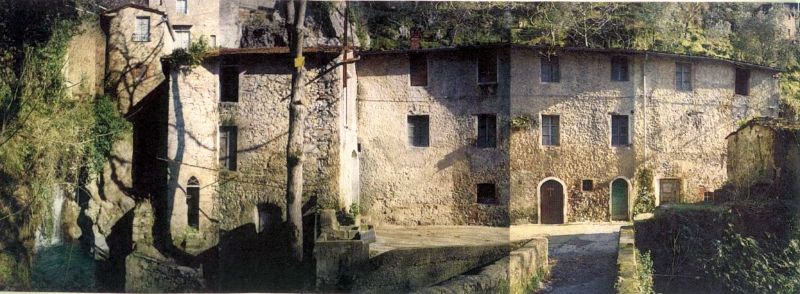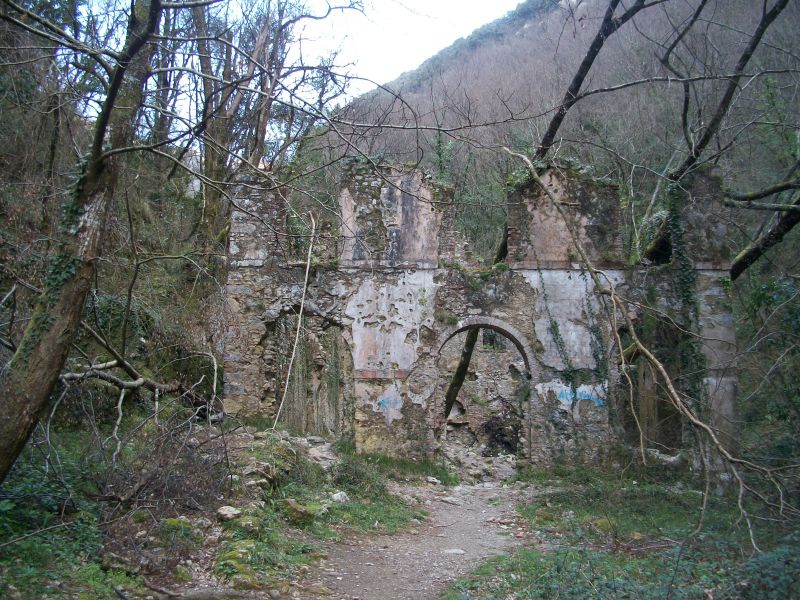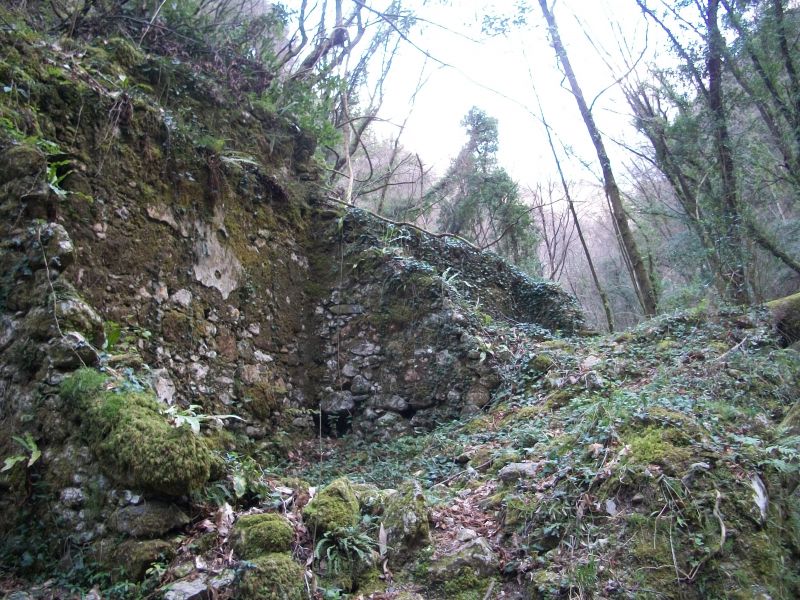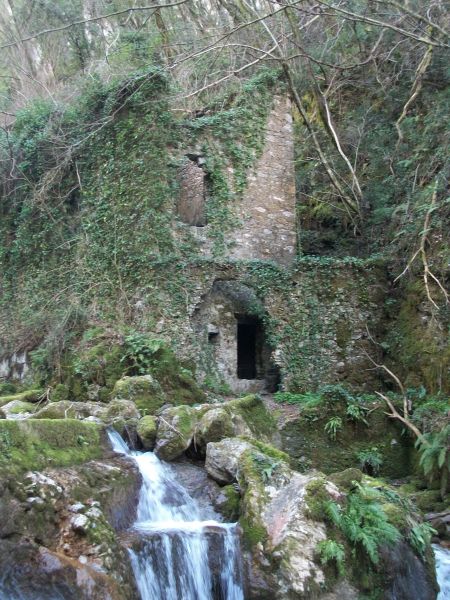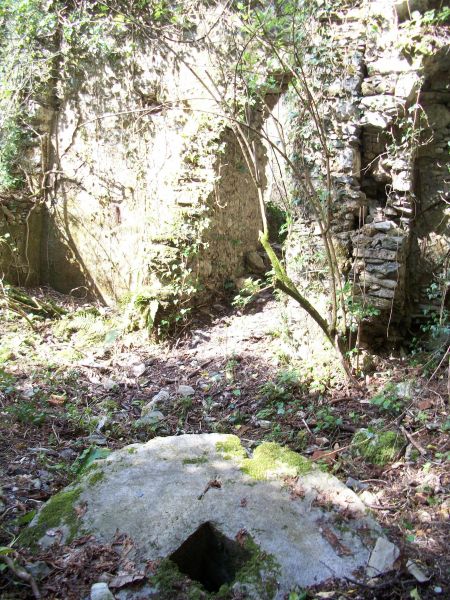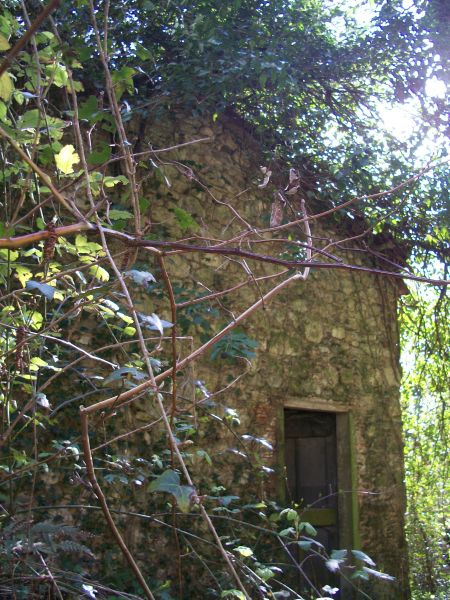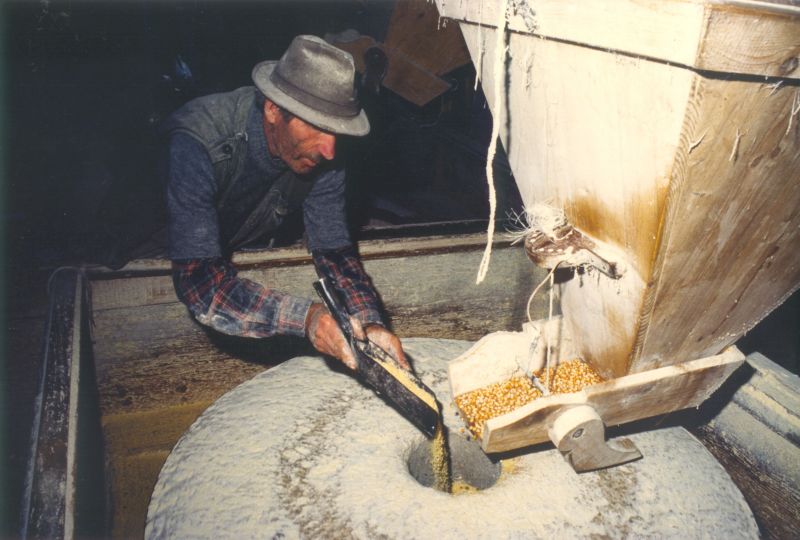 Il mugnaio del mulino di Candalla
Il mugnaio del mulino di Candalla
The hydraulic mills are located around the Lombricese creek, which flowing with the river Lucese forms Camaiore river. The Lombricese has its source from mount Prana 1000 metres above sea level. Thanks to the marked slope of the creek, it was possible to channel the kinetic energy of the water to create factories. The hydraulic mills are also on the tributary of Lombricese like Fosso dell'Ortaccio, Fosso all'Onda and Rio Nocetro. The location of the factory isn't random: in addiction to water the place is rich in raw material, like wood and rock, and there were a lot of paths to reach the factories. Between these, there is the Via Lombarda, which links Camaiore to Pascoso and Castelnuovo Garfagnana an important commercial route between emilian and lombard region. The earliest hydraulic mills were built around the Sixteenth century and were next to settlements.: they were the Candalla mill, the mill in locality al Fiume and the mill called al Felciaio. Between the Seventeenth and the Eighteenth century the presence of mills increases, in particular in locality Dilandi, located at the confluence of Lombricese and Rio Nocetro. In the Nineteenth century we can notice a great rise of hydraulic mills: from 9 to a total amount of 20. Most of them were located in Dilandi, because of the local characteristics. Thanks to land registry we can see that there were a lot of path and trail that connected the village to the mills. On the last part of the development process the hydraulic mills, they were built on the highest part of Lombricese Creek, between Fosso all'Onda and Rio Nocetro. There were built a gunpowder plant at Fosso all'Onda and one at Grotta Orbaja, an ironworks in locality al Felciaio and a watermill to Ponte della Penna.
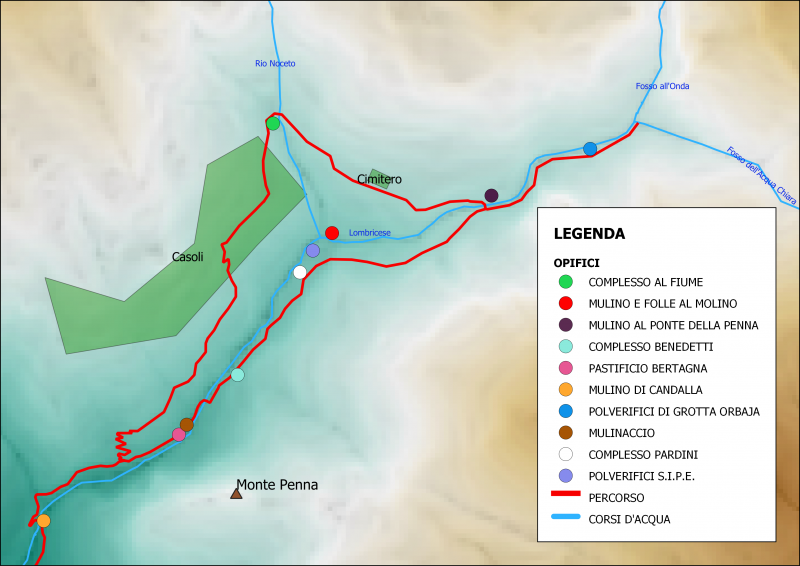 Mappa degli opifici sul torrente Lombricese
Mappa degli opifici sul torrente Lombricese
Mulino di Candalla
The first watermill is dated back at the beginning of the Seventeenth century, and It stopped to work some decade ago. The actual building is dated at the twentieth century, when it was rebuilt because of the Second World War. Inside of it there are the old millstone used to grind wheat, corn and chestnut.
Pastificio Bertagna
The pasta factory was build around the 1850s and it is located in locality Mulinaccio. It formed by tree structures: a stock, a pigsty and the pasta factory.
Mulinaccio
It's an old watermill and It was used to grind chestnut. The building is half underground, with structural deficiencies. Inside there is still the grind.
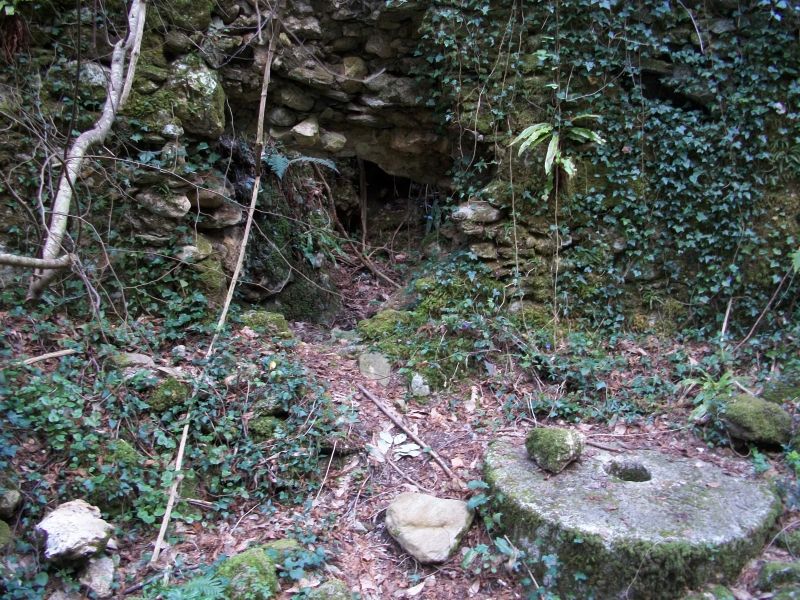
Complesso Benedetti
It's composed by three buildings, two used as a stock and one used as a oil mill. Inside the oil mill there are still the tools to mince the olive.
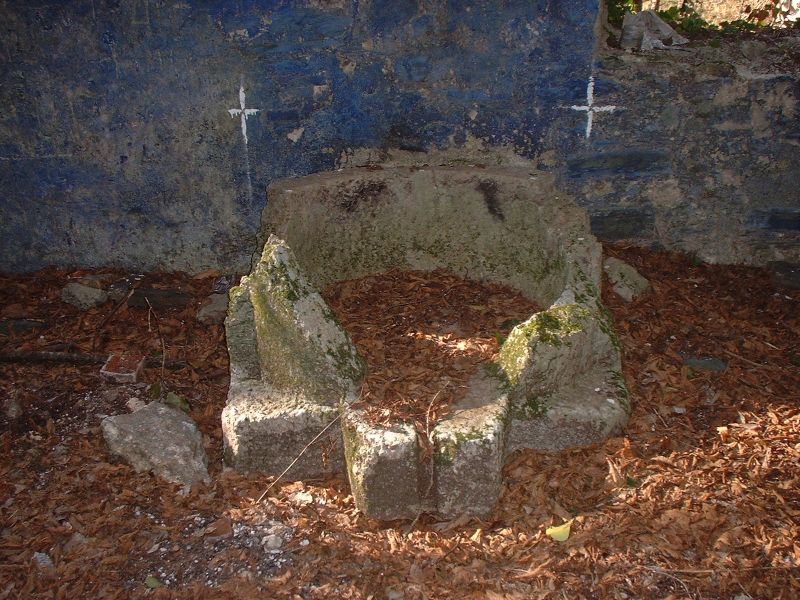 Uno dei macelli per la frangitura delle olive nel frantoio Benedetti
Uno dei macelli per la frangitura delle olive nel frantoio Benedetti
Complesso Pardini
It's compound by a texile plant, an olive beater, a watermill and a stock. The building was used from 1541 to 1903, going through changes. The complex was owned always by the same family.
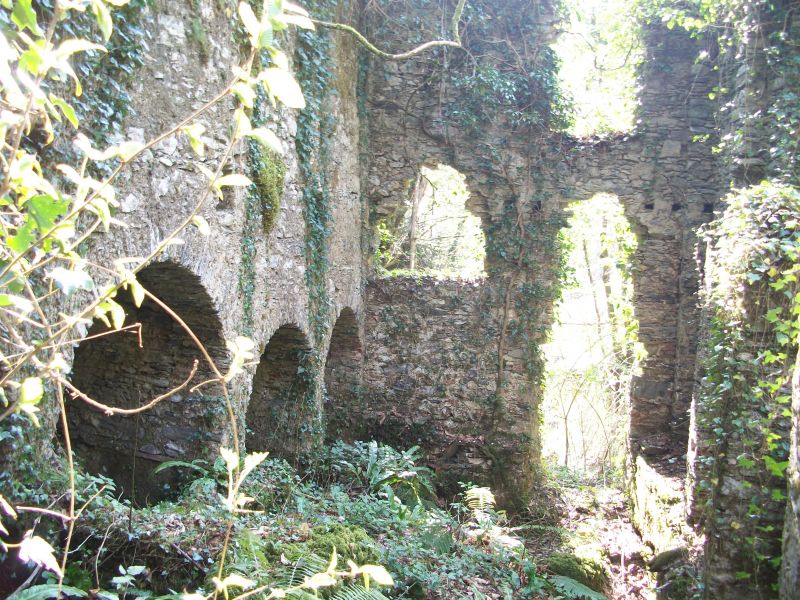
Polverifici S.I.P.E.
Mulino e Folle al Molino
The complex, compound by a watermill and a texile plant, was built around the beginning of the Nineteenth century, has often changed its function. Today is a private house.
Il Mulino e il Folle "al Molino"
Mulino al Ponte della Penna
It was built around 1960s and it's located next to the last bridge between Casoli and Metato.
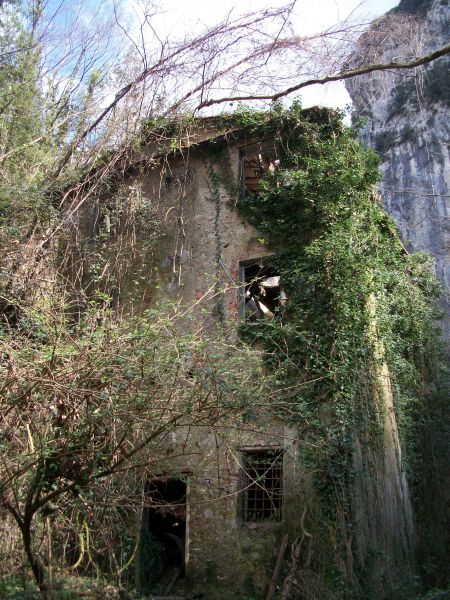
Polverifici di Grotta Orbaja
The gunpowder plants was built around 1869. At the beginning it was a textile plant, but it was converted to a gunpowder plant.
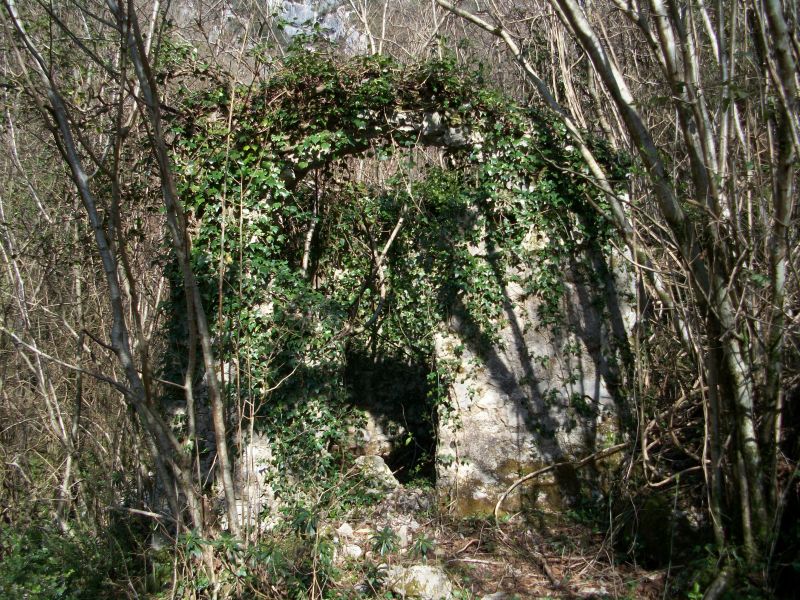
Complesso al Fiume
The first building was a watermill dated at the beginning of the Sixteenth century. Later it was sided by a textile plant and a olive mill. Today it is a private house.
Complex in locality "Al Fiume"


